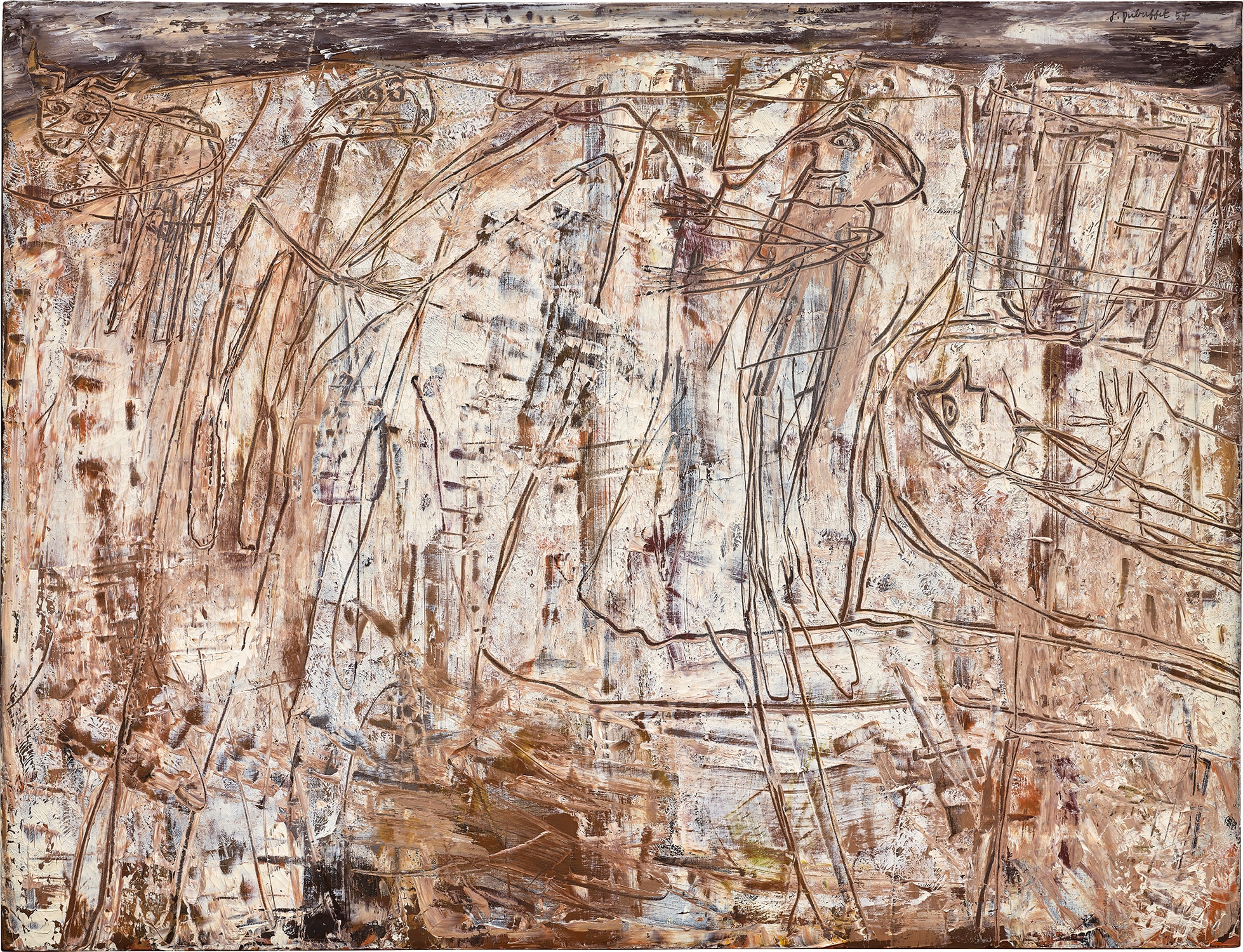

Property from the Joseph and Jeanne Sullivan Collection
27
Jean Dubuffet
Paysage à la vache (Le rendez-vous)
signed and dated "J. Dubuffet 57" upper right; signed, titled and dated "Paysage à la vache (Le rendez-vous) J. Dubuffet juin 57" on the reverse
oil on canvas
35 x 46 in. (88.9 x 116.8 cm)
Painted on June 11, 1957.